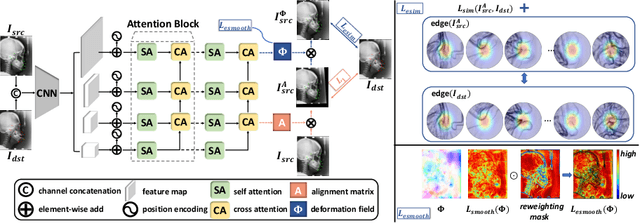One-Shot Medical Landmark Localization by Edge-Guided Transform and Noisy Landmark Refinement
Paper and Code
Jul 31, 2022



As an important upstream task for many medical applications, supervised landmark localization still requires non-negligible annotation costs to achieve desirable performance. Besides, due to cumbersome collection procedures, the limited size of medical landmark datasets impacts the effectiveness of large-scale self-supervised pre-training methods. To address these challenges, we propose a two-stage framework for one-shot medical landmark localization, which first infers landmarks by unsupervised registration from the labeled exemplar to unlabeled targets, and then utilizes these noisy pseudo labels to train robust detectors. To handle the significant structure variations, we learn an end-to-end cascade of global alignment and local deformations, under the guidance of novel loss functions which incorporate edge information. In stage II, we explore self-consistency for selecting reliable pseudo labels and cross-consistency for semi-supervised learning. Our method achieves state-of-the-art performances on public datasets of different body parts, which demonstrates its general applicability.
 Add to Chrome
Add to Chrome Add to Firefox
Add to Firefox Add to Edge
Add to Edge